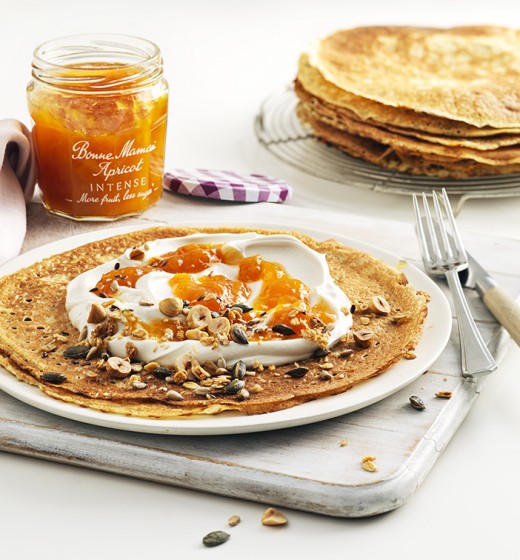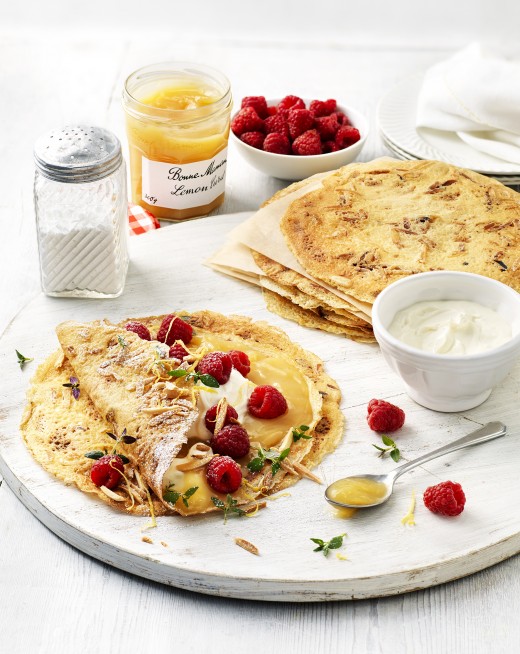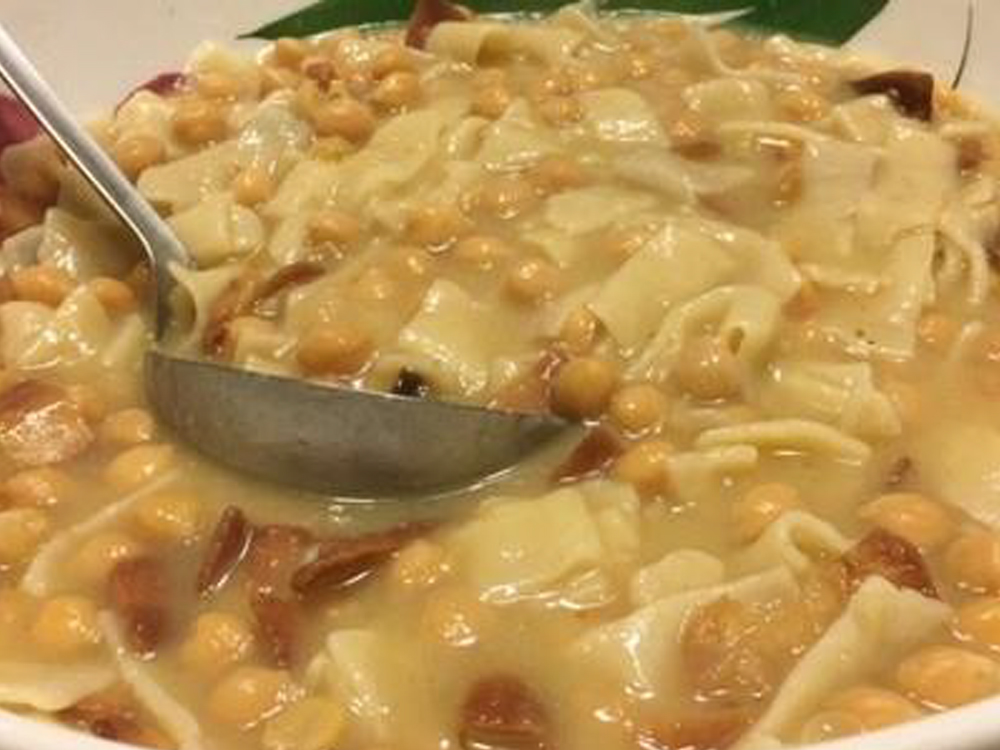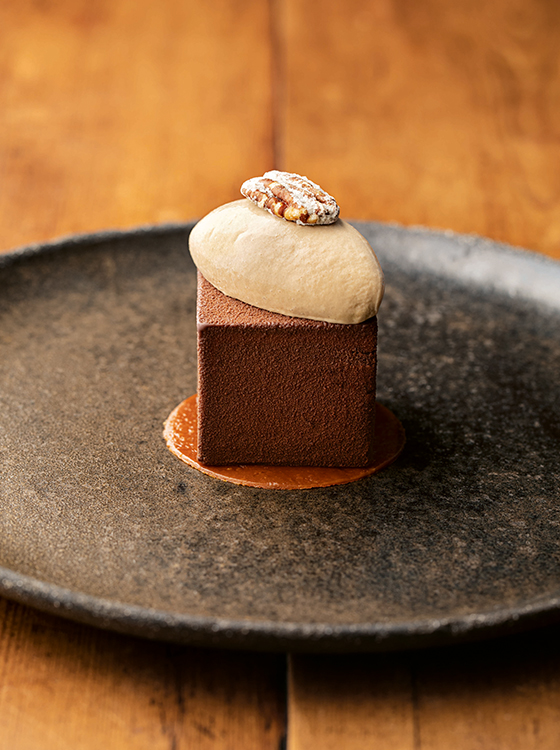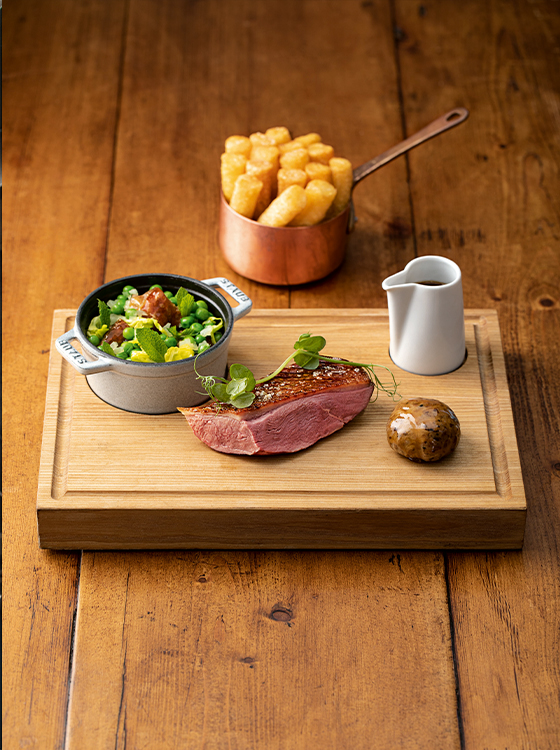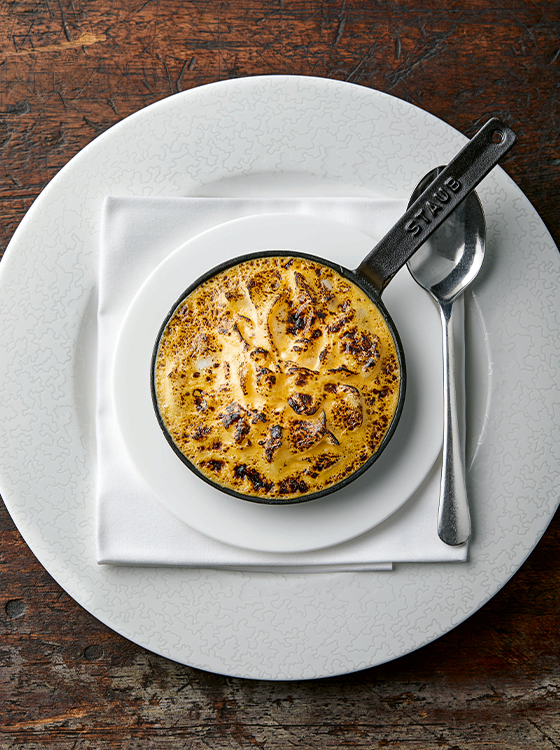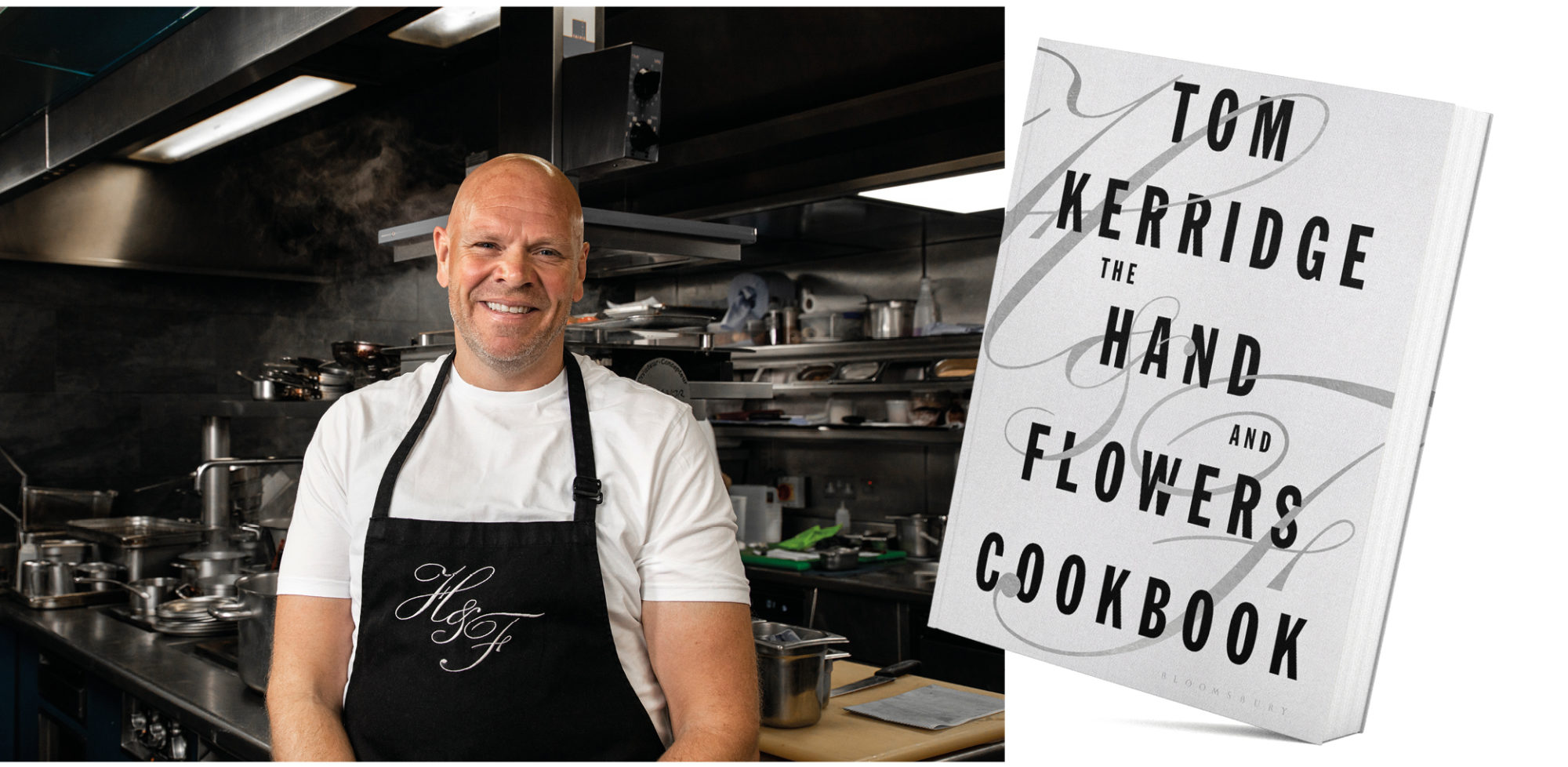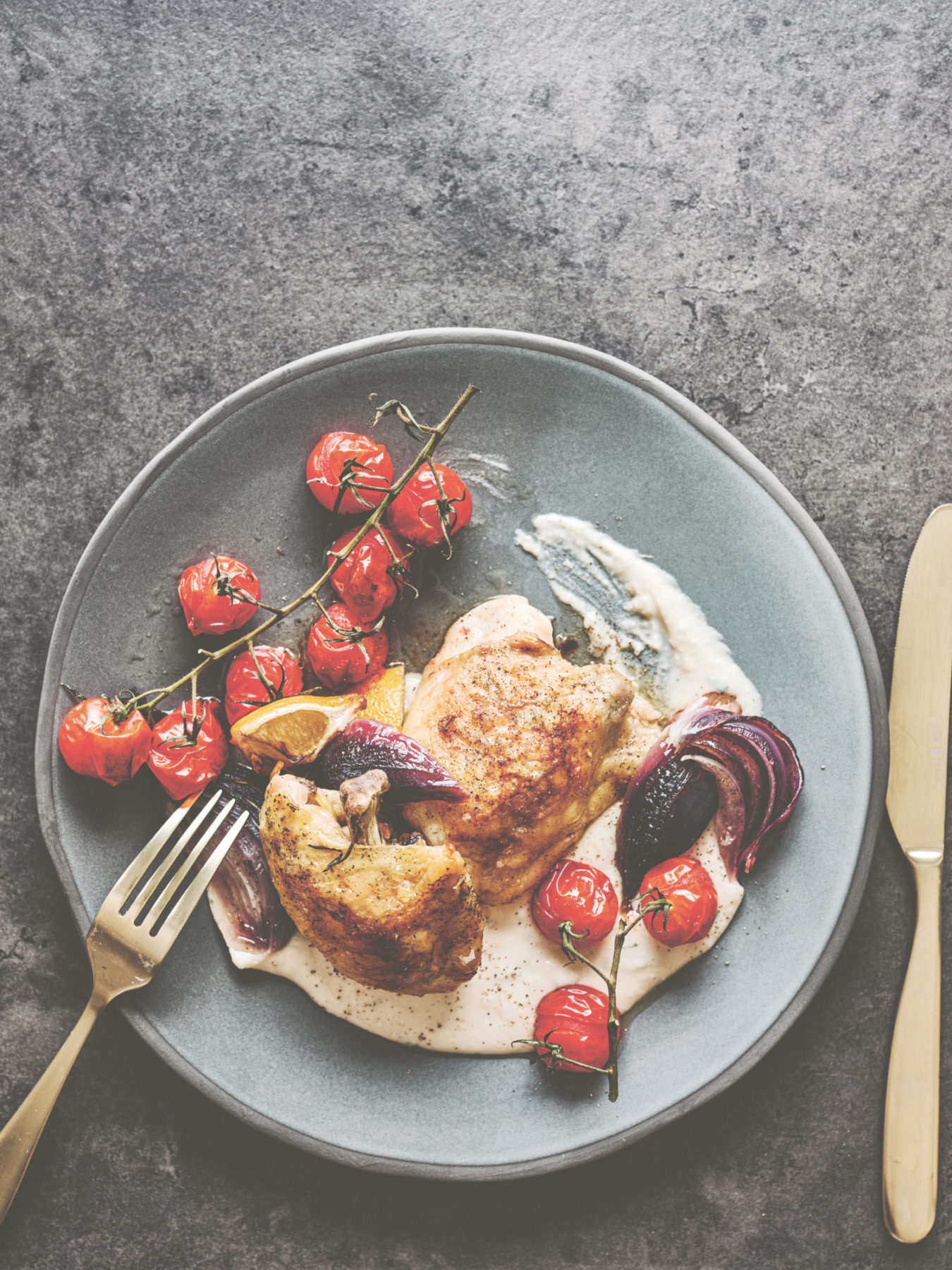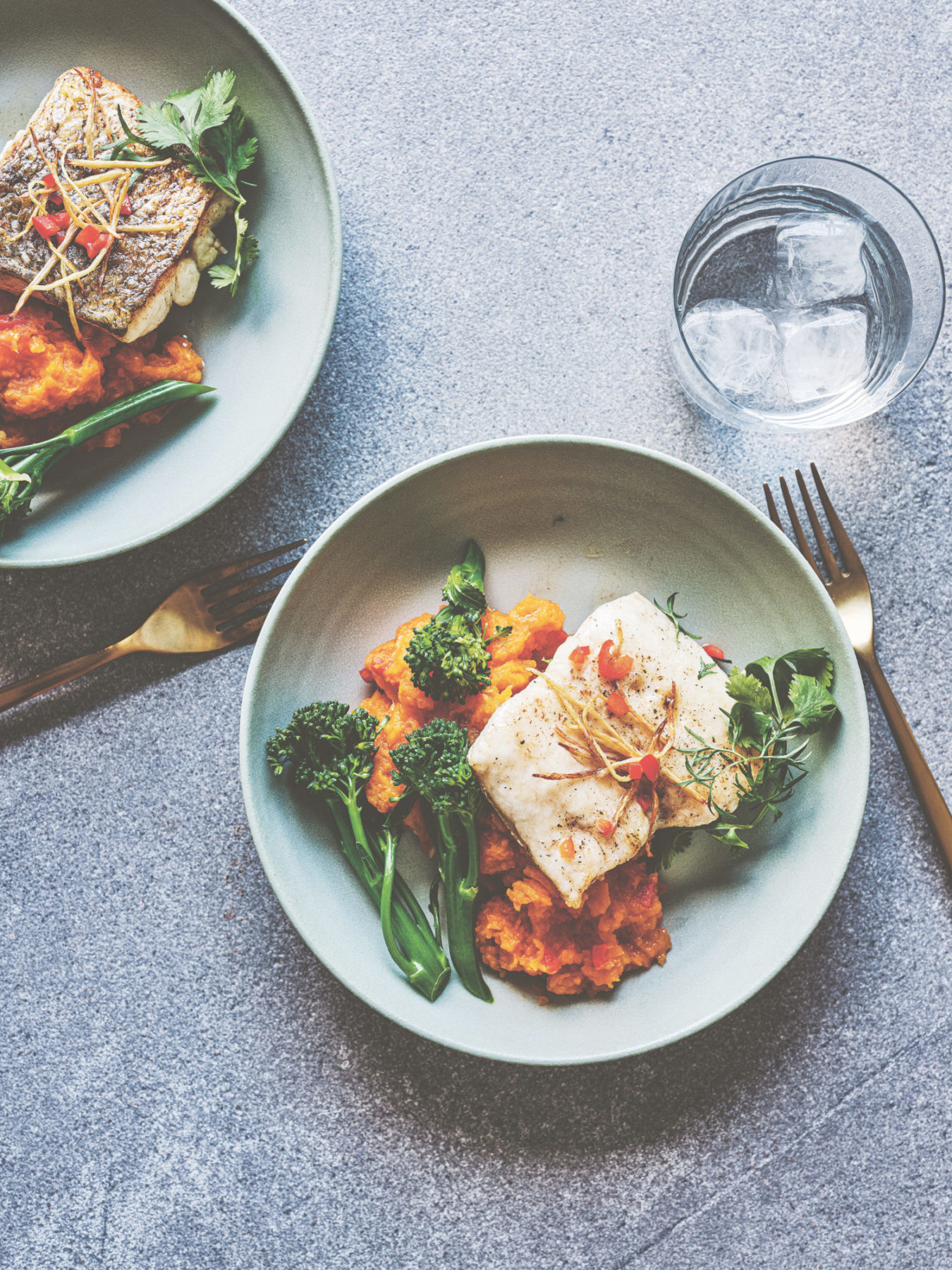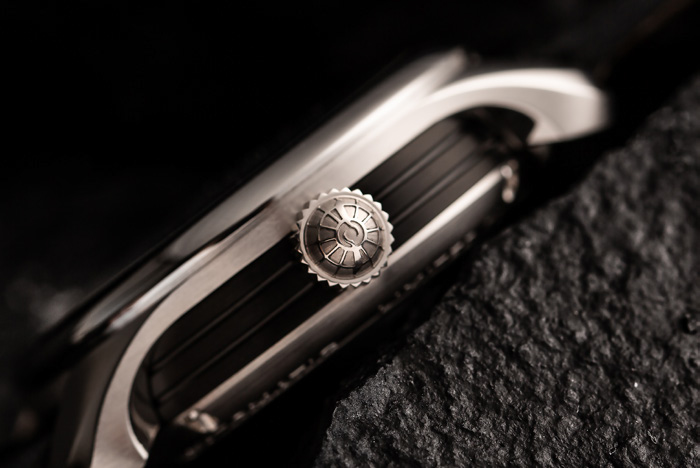Mandira Sarkar of Mandira’s Kitchen serves up a wonderful suggestion for Mother’s Day: spiced biscuits & masala chai to deliver to your mum’s doorstep if you live close enough to her…
Nankathai cookies & masala chai (hearty spiced tea)
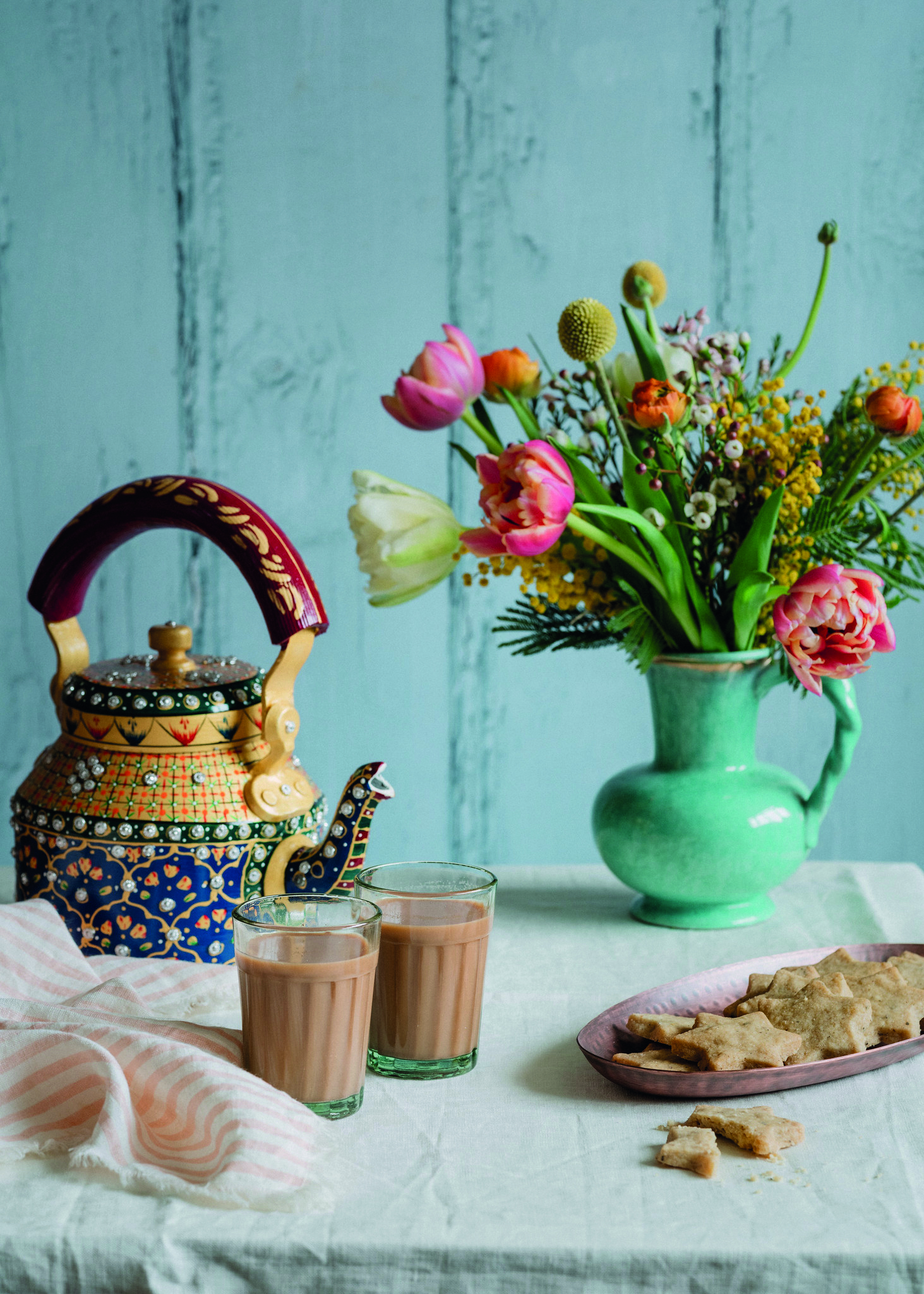
Ingredients:
• 100g ghee (clarified butter)
• ½ cup powdered sugar
• 1 cup plain flour
• ½ cup semolina
• ½tsp powdered cardamom
• ½ tsp baking powder
• 1/4 tsp baking soda
• Nuts for garnishing
For the masala chai:
• 1/4 cup milk
• One green cardamom
• ½ tsp grated ginger
• Two crushed peppercorns
• Two cloves
• 1 tsp loose leaf tea
Mother’s Day is on Sunday, 14th March. But, even if you can’t be with your mum, we thought this was a good excuse for tea & biccies.
Mandira, who can’t be with her mum as she is in Calcutta, tells us: “My earliest memories of tea time remain interspersed with the sounds of the Jeep arriving at the porch signalling Dad coming home at the end of his ‘kaamjari’, excited barking of the dogs and my sister and I running across the long verandah to greet him.
“Signalling the close of a working day, the world seemed at peace with itself… the setting sun casting its beautiful glow over the emerald green tea bushes and the blazing bougainvilleas looking as though someone had set off a light within…
“A very heavily laden three-tiered trolley would shortly make its way from the kitchen wheeled in to the verandah where we would all sit for tea… everything was arranged in some sort of predetermined order – the plump tea pot covered with a hand embroidered tea cosy filled with fresh brew straight from the factory and glasses of steaming milk from the cows (all children usually had their personal cows!) sat on the top tier with accompanying plates, starched napkins and cutlery… The second tier had savouries whilst the bottom tier cakes and biscuits. I still find it amazing how we had high tea every single day of the year with at least four things but no two days did the menu look or taste remotely similar. There were seasonal specialities like samosas made with a delicate homegrown potato and cauliflower filling – a sign that winter was nigh… Hot roasted ‘bhutta’ or corn on the cob picked straight from the ‘maalibari’, served with butter and slivers of lime in midsummer.
“These were melt-in-the-mouth nankathais that would put a Parisian bakery to shame and sandwiches with the most exciting of fillings from ‘chutney’ to ‘sausage’… Every different Memsaheb and cook had their own specialities. Given that there was no equipment like electric beaters, piping bags or even a temperature controlled oven, it is astounding the standard and quality of what came out of those huge wood-fired Agas and cool tile-lined kitchen counters…
“Those days are long gone… Most cooks like Monglu, our cook have passed on and the Memsahebs now live very different, albeit social, lives in bustling metros… However I cannot help thinking those tea times live on in their own way in the homes of the numerous ‘chai ka baby and babas’ scattered all over the globe … Through recipes… Embroidered linen, little silver bells… In my house it is my mum’s tattered Duliajaan cookbook handed down to me, those amazing chutney sandwiches, white fluffy nankathais or even the light of the early evening sun on a summer evening falling on my freshly mowed lawn…
Here is Mandira’s recipe for Nankathai cookies & masala chai (hearty spiced tea)
Method:
Preheat oven to 180 degrees. Beat the ghee and sugar until light and fluffy. To this add the flour, semolina, baking powder and baking soda, after they’ve been sieved. Mix to form a soft dough. Make small balls (the size of marbles) and put on a greased baking tray – they will spread so make sure there is adequate space in between.
Put a cashew nut or almond as garnish and bake the cookies for 15 minutes making sure they cook but do not brown.
Gently remove from the tray whilst hot and put on a baking rack .
These melt-in-the-mouth crumbly cookies are best served with masala chai.
To make this, boil one cup water with 1/4 cup milk and add the green cardamom, grated ginger, crushed peppercorns and cloves until the flavours are infused – which should take about eight minutes. Add one tsp of loose tea leaves and then strain and serve.
Order a special Indian inspired afternoon tea from mandiraskitchen.com/product/mothers-day-afternoon-tea & use the code AboutMum for free chilli chocolates
Slow-cooked duck with duck gravy
Ingredients:
• 2 large Aylesbury ducks, about 2kg each
• 3 tsp ground mace
For the duck gravy:
• 500g duck bones and wings, chopped A little vegetable oil for cooking
• 4 carrots, peeled and chopped into 3cm pieces
• 4 celery sticks, cut into 3cm pieces 1 onion, peeled and diced into 3cm pieces
• 1 garlic bulb, cut across in half, through the equator
• 150g runny honey
• 4 cloves
• 2 litres chicken stock
• 50ml soy sauce
• About 500g unsalted butter
• Lemon juice, to taste (optional)
• Sea salt and freshly ground pepper
PREP: 20 minutes
COOKING: 90 minutes
SERVES: 4
Some dishes end up defining you, chef and restaurant. This is one of them. I cooked it at the Great British Menu banquet for Prince Charles and the Duchess of Cornwall in 2010. That raised our profile into the stratosphere: everybody suddenly wanted to book a table at The Hand & Flowers and order duck and chips!
Method:
Remove the legs and wings from the ducks and take out the wishbone (reserve for the faggots, gravy etc., see right and overleaf). Remove the excess fat and skin, placing it all in a frying pan. Now carefully cut away the backbone; you should be left with the crown.
Place the pan of fat and skin over a low heat to render the fat out. Set aside for later use.
Score the skin on the duck crowns and rub in the mace. Heat a heavy-based frying pan over a medium-high heat. Add the duck crowns and sear on all sides for 5–10 minutes to render the fat and give the skin a good golden colour. Remove the duck crowns from the pan and allow to cool.
Put each duck crown into a large vacuum-pack bag and vacuum-seal on full pressure. Immerse in a water-bath at 62°C and cook for
1½ hours.
Lift out the vacuum-pack bags and remove the ducks. Carefully cut the breasts from the crowns. Cover and refrigerate until ready to cook.
Duck gravy:
Preheat the oven to 205°C/Fan 185°C/Gas 6–7. Put the chopped duck bones and wings into a roasting tray and roast in the oven for about 25–30 minutes until golden brown and caramelised.
Heat a little oil in a large heavy-based saucepan over a medium-high heat. Add the chopped carrots and colour until darkly caramelised. Add the celery, onion and garlic and similarly colour until well browned.
Remove the duck bones and wings from the roasting tray and add them to the saucepan. Drain off the excess fat from the roasting tray, then add the honey and cloves to the tray. Place over a medium heat and take the honey to a dark golden caramel.
Add a splash of the chicken stock and the soy sauce to deglaze the tray, stirring to scrape up the sediment. Add the liquor to the duck bones and vegetables. Pour in the rest of the chicken stock and reduce down by half, to 1 litre.
Pass the liquor through a muslin-lined sieve into a clean pan and skim off any excess fat from the surface. Add 250g butter to every 500ml duck liquor and reduce down until it has emulsified into the sauce.
Season with salt and pepper and add a little lemon juice if required. Set aside for serving.






